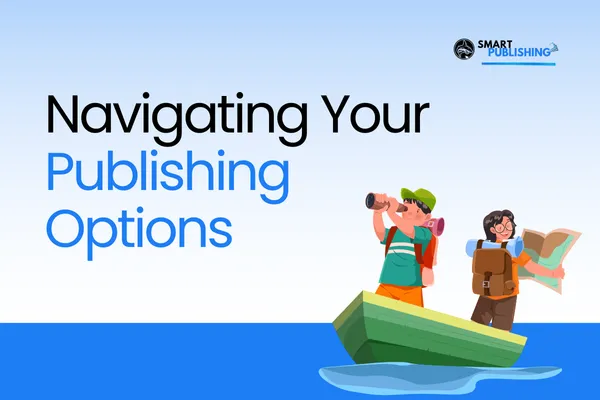
Three Publishing Pathways: Which One Is Right for You?
Three Publishing Pathways: Which One Is Right for You?
📘 Smart Publishing Impact Series – Episode 34
When most people think about writing a book, they imagine stacks of printed copies sitting in their garage or endless hoops to jump through to get accepted by a big-name publisher. Thankfully, the publishing world has changed dramatically in the last decade.
Today, authors have three primary publishing pathways: traditional publishing, self-publishing, and independent (or hybrid) publishing. Each comes with its own trade-offs in terms of accessibility, control, credibility, and cost.
Let’s walk through the pros and cons of each so you can confidently choose the right path for your book.
📚 Traditional Publishing
This is what most people picture when they think of “getting published.” Big houses like Penguin Random House or HarperCollins dominate this space.
To even get considered, you’ll need a literary agent.
Agents accept only 1–2% of submissions they receive each year.
Of those, only about 60–70% land a publisher.
If you’re one of the few who make it through, you’ll typically earn an advance of $5,000–$10,000 and 10–20% royalties. In exchange, you give up:
Creative control (cover design, length, even word count rules).
Most of your royalties.
Traditional publishing works well for authors with built-in audiences, public figures, or highly marketable ideas. But it’s a tough, highly exclusive route.
✍️ Self-Publishing
Thanks to platforms like Amazon KDP, Lulu, and IngramSpark, authors can now publish professionally without warehouses full of books. With print-on-demand, your book isn’t printed until it’s ordered.
Self-publishing gives you total ownership, but also total responsibility for:
Editing
Interior formatting
Cover design
ISBNs
Upload and distribution
Marketing and launch strategy
Done right, self-publishing can elevate your credibility and bring in revenue. Done sloppily, it can hurt your reputation. That’s why professional editing, design, and formatting are non-negotiables.
If you’re detail-oriented and want full control, self-publishing is a powerful option.
🤝 Independent (Hybrid) Publishing
Independent publishing combines the best of both worlds: professional quality without losing control of your book.
At Smart Publishing, our authors:
Keep 100% of their rights and royalties.
Maintain creative control with expert guidance.
Get end-to-end support—from chapter mapping to editing, design, ISBNs, publishing, and launch planning.
The key difference? Unlike some “churn and burn” companies, we’re selective and hands-on. Every book we publish is treated with the same care and pride as if it were our own.
Independent publishing is ideal if you want professional results but don’t want to carry the entire publishing process on your back.
⚖️ Choosing the Right Path
Traditional publishing: best for prestige and mass-market reach (but requires connections and patience).
Self-publishing: best for total control and independence (if you’re ready for the workload).
Independent publishing: best for authors who value ownership but want expert support at every step.
No matter which you choose, the important thing is that your book gets written—and gets out into the world.
So keep writing your story. The world needs your voice.
—Renee
